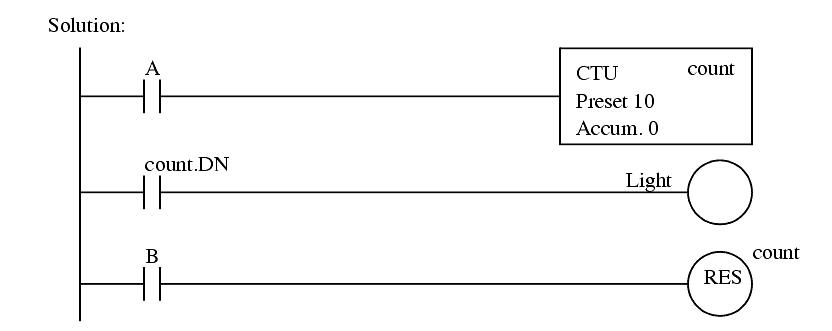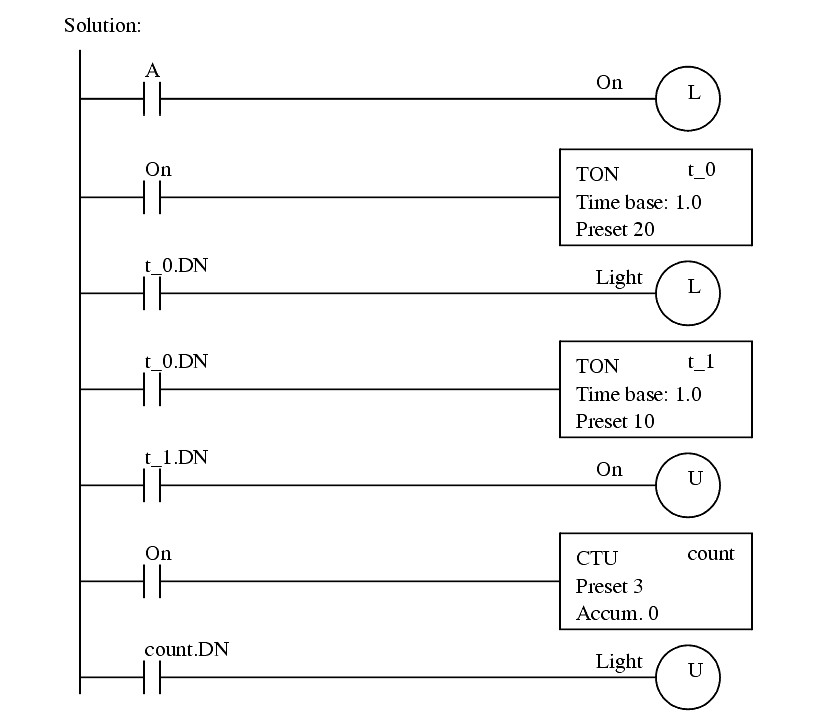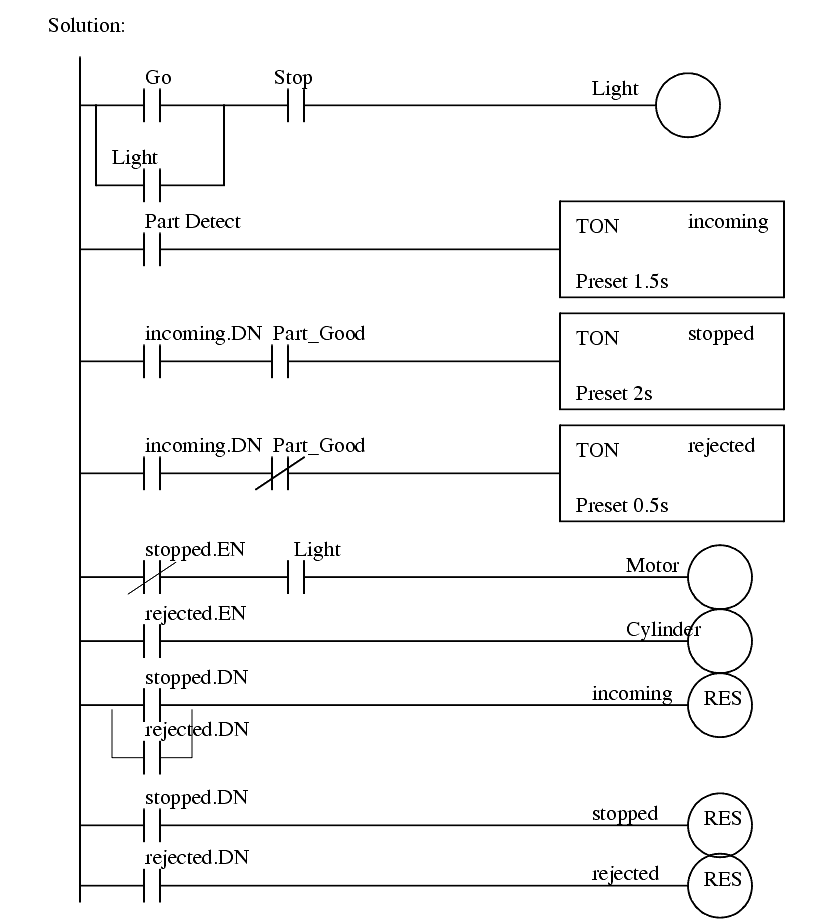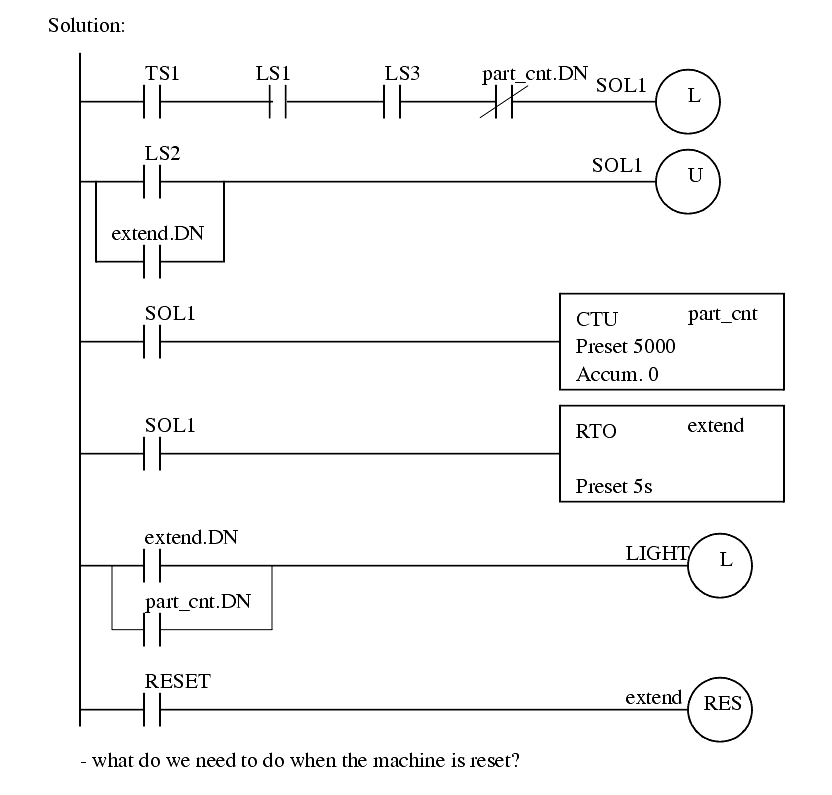9.7 DESIGN CASES
������������The following design cases are presented to help emphasize the principles presented in this chapter. I suggest that you try to develop the ladder logic before looking at the provided solutions.
9.7.1 Basic Counters And Timers
������������Problem: Develop the ladder logic that will turn on an output light, 15 seconds after switch A has been turned on.

Problem: Develop the ladder logic that will turn on a light, after switch A has been closed 10 times. Push button B will reset the counters.

9.7.2 More Timers And Counters
������������Problem: Develop a program that will latch on an output B 20 seconds after input A has been turned on. After A is pushed, there will be a 10 second delay until A can have any effect again. After A has been pushed 3 times, B will be turned off.

9.7.3 Deadman Switch
������������Problem: A motor will be controlled by two switches. The Go switch will start the motor and the Stop switch will stop it. If the Stop switch was used to stop the motor, the Go switch must be thrown twice to start the motor. When the motor is active a light should be turned on. The Stop switch will be wired as normally closed.

9.7.4 Conveyor
������������Problem: A conveyor is run by switching on or off a motor. We are positioning parts on the conveyor with an optical detector. When the optical sensor goes on, we want to wait 1.5 seconds, and then stop the conveyor. After a delay of 2 seconds the conveyor will start again. We need to use a start and stop button - a light should be on when the system is active.

9.7.5 Accept/Reject Sorting
������������Problem: For the conveyor in the last case we will add a sorting system. Gages have been attached that indicate good or bad. If the part is good, it continues on. If the part is bad, we do not want to delay for 2 seconds, but instead actuate a pneumatic cylinder.

9.7.6 Shear Press
������������Problem: The basic requirements are,
1. A toggle start switch (TS1) and a limit switch on a safety gate (LS1) must both be on before a solenoid (SOL1) can be energized to extend a stamping cylinder to the top of a part.
2. While the stamping solenoid is energized, it must remain energized until a limit switch (LS2) is activated. This second limit switch indicates the end of a stroke. At this point the solenoid should be de-energized, thus retracting the cylinder.
3. When the cylinder is fully retracted a limit switch (LS3) is activated. The cycle may not begin again until this limit switch is active.
4. A cycle counter should also be included to allow counts of parts produced. When this value exceeds 5000 the machine should shut down and a light lit up.
5. A safety check should be included. If the cylinder solenoid has been on for more than 5 seconds, it suggests that the cylinder is jammed or the machine has a fault. If this is the case, the machine should be shut down and a maintenance light turned on.
